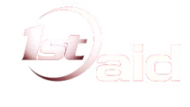Whenever you complete first-aid training sessions you’ll get the expertise and self-esteem to manage a number of different substantial emergencies. Here at 1st aid courses we will be happy to direct you to the correct first aid course.
How would you react if someone else was having trouble inhaling and exhaling? Can you recognise someone who is choking and realise of how to handle it? What if you discovered someone you care about lying unconscious on the floor? Would you know the right actions to take? Let’s say your friend unexpectedly had difficulty communicating and then lost his or her balance? Would you know how to react? Would you know when to call 9-1-1? Individuals that receive first-aid schooling will learn to respond to all the earlier mentioned circumstances and greatly increase the patient’s possibility of surviving. If you take almost any Canadian first-aid lessons from a quality provider such as the Heart and Stroke Foundation all these topics and skillsets are going to be covered.
If a person appeared to be unresponsive and on the ground people competent in first-aid will know the essential cardiopulmonary resuscitation steps to aid the individual. Victim identification and C.P.R. are essential skills covered in almost any 1st aid lesson. Most reliable first aid and cardiopulmonary resuscitation providers teach individuals the most up-to-date principles and techniques in C.P.R. as provided by the International Liaison Committee on Resuscitation.
If an individual was struggling breathing would you know the steps to take? General first-aid education educates individuals with the skills to treat subjects with respiratory system issues. These kinds of emergencies consist of bronchial asthma, allergic reactions and hyperventilation. Students will learn to distinguish these particular situations and treat effectively. Individuals will likely learn to decide which circumstances justify contact with emergency medical services.
People participating in basic first aid will learn to respond to individuals troubled with circulatory emergencies. These kinds of crisis situations involve victims experiencing chest pains, breathlessness, tingling, reduction in limb function, problems speaking, reduction of balance and eye-sight. Applicants will be taught to spot and handle affected individuals with these symptoms that happen to be present with circulatory issues that include heart attacks, and transient ischemic attacks (TIA).
All first aid instructional classes emphasize consistent practical instruction using dummies which are also referred to as manikins. Individuals will even display and exercise abilities and rescue techniques with mock cases by means of other participants in the course. A lot of these courses cover the skills elements of first-aid and C.P.R. with a strong focus on hands on training.
Candidates who complete the lessons get the latest three year certification which could assist in employment purposes, academics and self-confidence. Certs are viable throughout Canada and meet workplace and academic requirements. Certificates also meet government regulatory requirements. A lot of Canadian provinces provide students with high school credit once supplying a standard first aid certification. Courses range between 4 hrs to 20 hours so make sure to check which class accommodates your requirements or objectives. Just about any first-aid course will show you the essentials for crisis rescues and acute medical emergencies.

Great article!There are many pacels you can take a CPR class. You can also contact your local hospital, fire department or ambulance service. Many have instructors on staff or who will refer you. In addition to the Red Cross, courses are offered by the American Heart Association (AHA), American Health & Safety Institute (ASHI), and the National Safety Council. There are many instructors, like myself, who teach at a training center but who are also considered independent instructors.The best classes to take are the hands-on classroom courses or the programs you can purchase that include a mannequin to practice at home. There are many online programs, the reputable ones require a skills session with an instructor. Hands-on learning is the best way to learn.Gailwww.coastalcpr.com